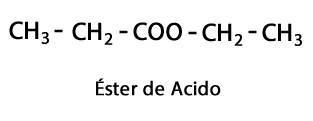40 Examples of Soft and Hard Technologies
Miscellanea / / July 04, 2021
The technologies constitute the set of knowledge, techniques and procedures that emerge from the science and they are configured in pursuit of the positive modification of the environment that surrounds people.
As the technique, technology finds the methods that optimize the performance of a task and therefore give rise to the improvements in human quality of life, a process that has been taking place with force since the industrial revolution but with greater emphasis at the end of the 20th century.
It is common for those who are not used to interacting with development processes of technology believe that the scope of the concept is limited to the creation of innovative objects: as the procedure by which the Technology advances, it is thought in accordance with the techniques of antiquity by which physical work and effort were the engine of growth.
Technology connoisseurs, on the other hand, choose to consider within it the entire process involved in the development and innovation, being part of it a sum of areas that are not easy to imagine a priori. For this, the subdivision between soft and hard technologies is carried out.
Hard technologies
Called hard technologies those that most correspond to the image that most people have regarding the technology: are those that transform materials in order to produce or build new objects and materials. For example:printer, compass, telegraph.
All the physical products that are developed in the large Business of the world to make tasks easier for its users are hard technologies, and within them there are many ways to stand out: size, physical characteristics, attractiveness and functionality with respect to its use, which may be for home, recreational or industrial.
The use of tools and machines is usually involved in its production, which in many cases is in series and automated: physical actions on matter are performed by machines, which in turn constitute hard technology of another era. When it comes to computing, hard technologies are covered by everything that is considered 'hardware’.
Examples of hard technologies
- Printer.
- Car.
- Water purification plant.
- FM Radio.
- Railway.
- TV.
- War plane.
- Modern printing house.
- Windmills.
- Compass.
- Laptop.
- Steam boat.
- Mechanization of textile industries.
- GPS with locator satellite.
- Nine millimeter pistol.
- Fire detector.
- Incandescent lamp.
- Cell phone.
- Led screen.
- Telegraph.
Soft technologies
The soft technologiesFor their part, they are the ones that are most overlooked in discussions about the technological problem of the company: they are associated for the operation of the company and the fulfillment of its functions. For example: accounting tools, production logistics, task teachings.
The organization and management of the company are carried out within the framework of a process that, although not technological in the terms of hard technologies, if they involve a series of optimized processes in the same sense as in the technology.
Just as hard technologies use sciences considered hard (such as physics, chemistry or engineering) in soft technologies what is used are the soft sciences, those most linked to human relationships (the economy, sociology or psychology).
However, there are also soft technologies that constitute technological procedures in their entirety, with the only characteristic of not being tangible: this is what happens in the case of computing, with all the programs that constitute software. Some examples of soft technologies will be listed below.
Examples of soft technologies
- Software for basic mathematical operations.
- Marketing procedures.
- Economic tools to carry out projections.
- Softwares for communication fast between departments.
- Accounting tools.
- Statistical software tools.
- Software to permanently know the status of a shipment from a company to an individual.
- Organizational tools.
- Production logistics.
- Homework teachings.
- Wi-Fi connections.
- Administration tools.
- Software development for non-profit organizations.
- Training sessions.
- Educating bosses about dealing with their subordinates.
- Administration and motivation of human resources.
- Psychology of the personal relationships of the company.
- The microeconomic processes for the determination of prices and quantities.
- Procedures for management control
- Stock market software for the finance department.

